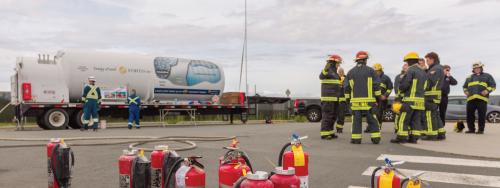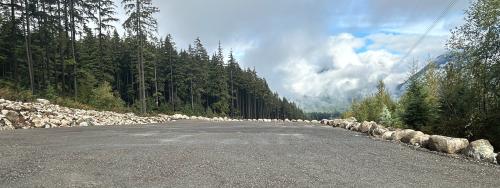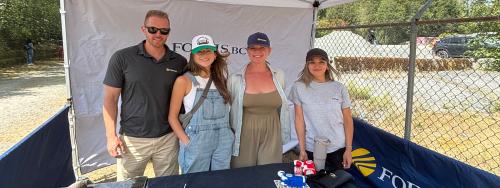Protecting the Fraser River's white sturgeon
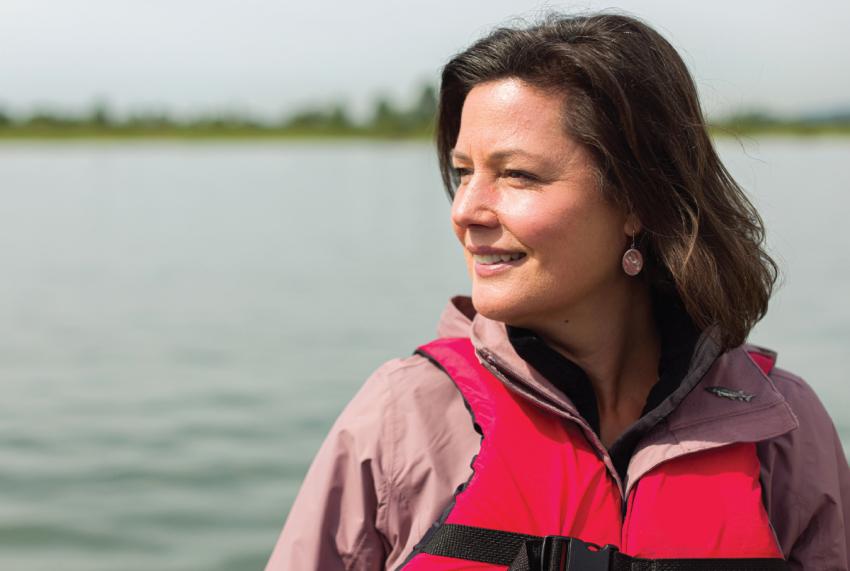
The white sturgeon still reigns supreme in the Fraser River ecosystem, but even here its numbers have dwindled—particularly in the lower Fraser River.
Enter the Fraser River Sturgeon Conservation Society (FRSCS), a non-profit organization committed to the preservation and recovery of wild Fraser River white sturgeon. Its vision is crystal clear:
White Sturgeon are wild, healthy and naturally sustaining throughout the Fraser River watershed.
In pursuit of this vision, the FRSCS collaborates closely with First Nations, provincial and federal governments, scientific experts and various partners, leveraging scientific expertise and knowledge to monitor white sturgeon across the Fraser River watershed.
Sarah Schreier, FRSCS executive director, explains, "The Fraser River white sturgeon is a magnificent apex species that has outlived two ice ages and remains virtually unchanged over 65 million years. They’re hardwired to survive, yet they’re struggling and need our help.”
The catch and release monitoring and assessment tagging program
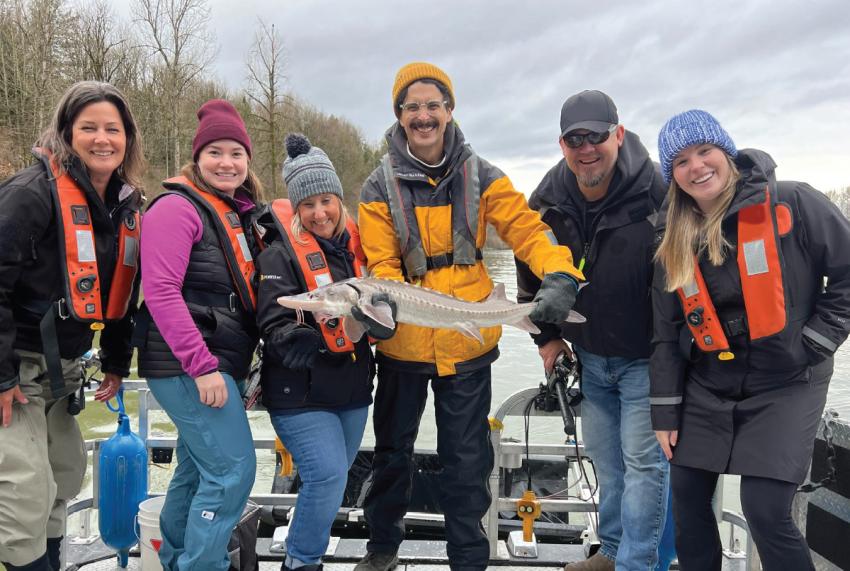
One pivotal initiative involves the catch and release monitoring and assessment tagging program, something our FortisBC Tilbury LNG team recently had the pleasure of participating in. The program includes ethical fishing practices where sturgeon are captured, checked for previous tagging, recorded to inform conservation efforts and released. Ethical fishing entails the use of rod-and-reel fishing with non-barbed hooks ensuring minimal stress on the fish during the capture and release event.
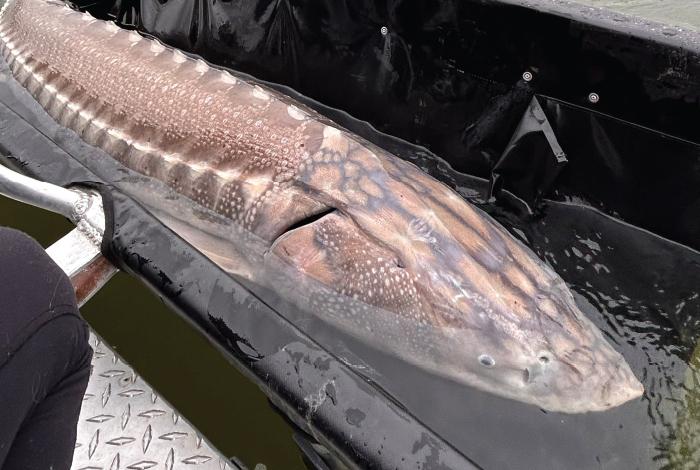
Sturgeon, with their unique skin-like exoskeletons and boney, armoured scutes, require special care and handling for both the fish and the tagger. The tagging system deployed by FRSCS facilitates the collection of vital information on the sturgeon population, including size, growth rates and migration patterns. Since its inception in 2000, more than 90,000 tags have been deployed, contributing to a comprehensive database of encounters and recaptures.
Collectively, the FortisBC Tilbury LNG team recorded 18 sturgeons, nine of which were unmarked and released with new tags. Joanne Hunton-Sehdev, a FortisBC community relations manager, was one of the Tilbury team members who participated in the tagging event. She notes, “It was an amazing opportunity to learn and witness these unique, resilient and prehistoric creatures up close.”
“The white sturgeon tagging event we participated in reaffirmed for us how crucial it is for the FRSCS to continue their work to help ensure the sturgeon’s survival for millennia to come.”
The majority of tags deployed throughout the years are thanks to 60 volunteers, including professional sport fishers and guides, recreational anglers and members of diverse communities including First Nations, federal and provincial government, biologists, scientists and ecologists. Their dedication not only enhances understanding of sturgeon biology, but also raises awareness about the importance of conservation on a local and global scale.
Their volunteer effort has resulted in one of the best baseline population models on a freshwater species in the world. By tagging and monitoring, scientists glean insights into sturgeon behavior, habitat preferences and population dynamics. Despite years of study, these enigmatic creatures continue to unveil surprises, underscoring the need for ongoing research.
Of particular significance are the juvenile sturgeon, which are revealing promising trends. A notable proportion of juveniles remain untagged, signaling potential hope for population regeneration. Yet challenges persist, including dwindling food sources, predation and the threat of poaching. The FRSCS remains steadfast in its commitment to safeguard these ancient giants.
Tilbury’s support for the FRSCS
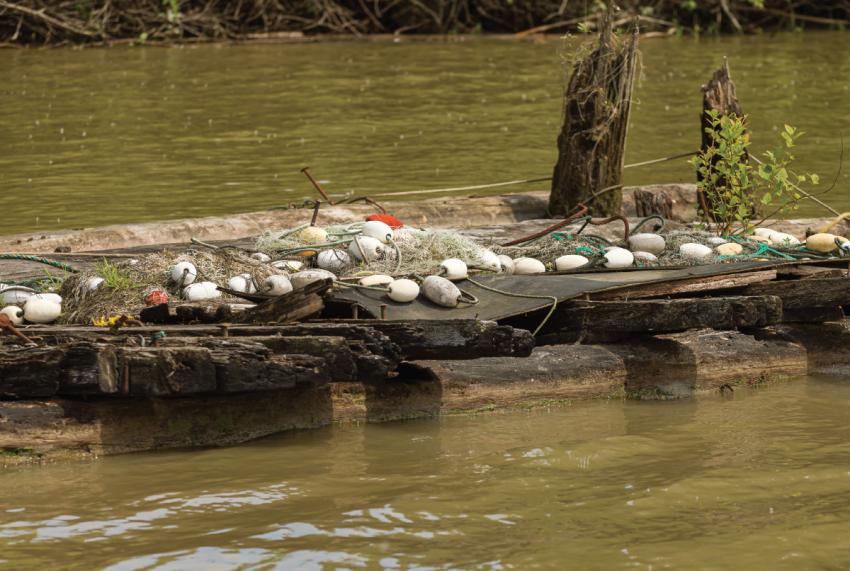
FortisBC’s Tilbury LNG facility’s proximity to the heart of the Fraser River’s ecosystems and habitats has helped us understand the needs of the FRSCS. The Tilbury LNG Expansion projects currently support the FRSCS by providing funding for their Ghost Gear Removal Program that removes abandoned or lost fishing gear from the Fraser River, further protecting the white sturgeon population and other fish species like salmon.
Sarah concludes, “We’re grateful for the opportunity to partner with FortisBC to make a difference for Fraser River white sturgeon and help to ensure that sturgeon survive for generations to come."
To discover how you can make a difference, visit the FRSCS website and learn more about FortisBC’s collaborative efforts. Together, we can chart a course towards a brighter, more sustainable future for Fraser River white sturgeon.

